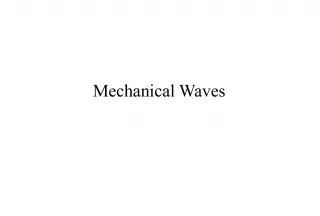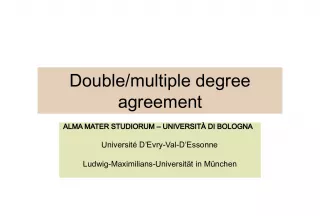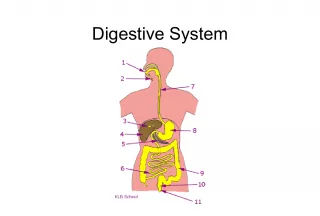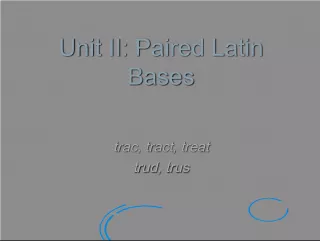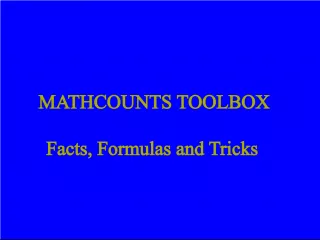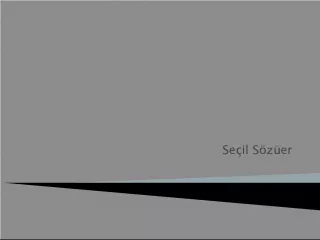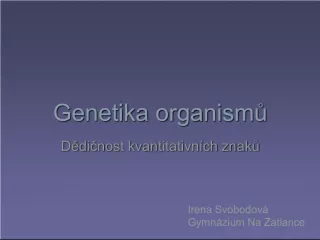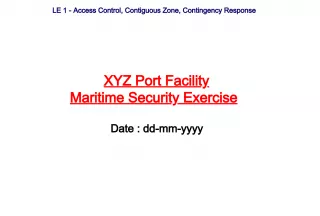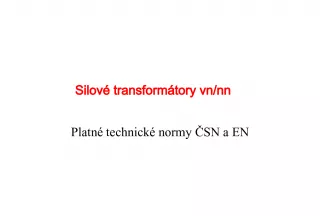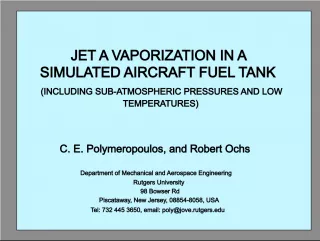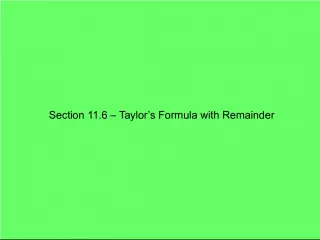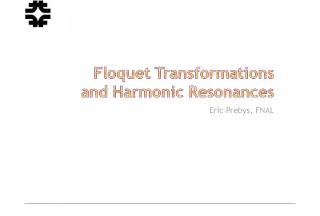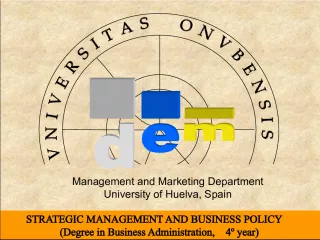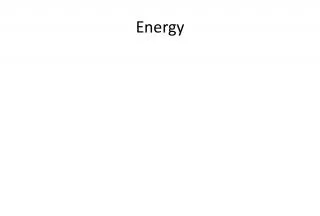Harmonic Response with a Single Degree of Freedom - Mechanical Vibration
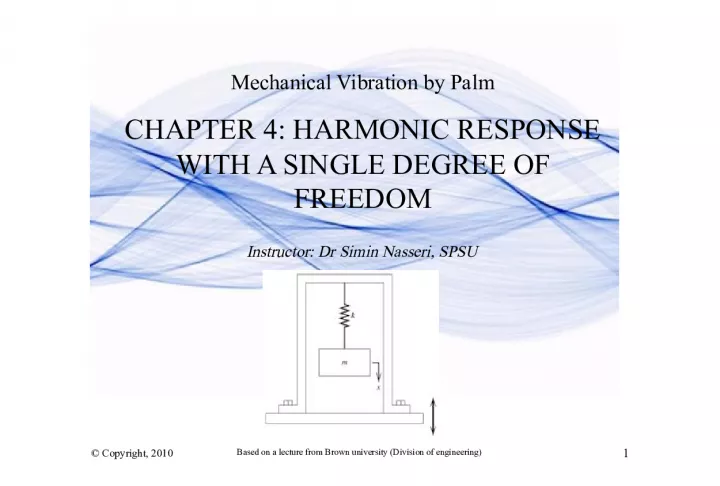

This chapter discusses the response of a single degree of freedom system to harmonic external forcing, including types of forcing such as base excitation and rotor excitation. It presents the derivation of the equation of motion and standard form.
- Uploaded on | 0 Views
-
 arleth
arleth
About Harmonic Response with a Single Degree of Freedom - Mechanical Vibration
PowerPoint presentation about 'Harmonic Response with a Single Degree of Freedom - Mechanical Vibration'. This presentation describes the topic on This chapter discusses the response of a single degree of freedom system to harmonic external forcing, including types of forcing such as base excitation and rotor excitation. It presents the derivation of the equation of motion and standard form.. The key topics included in this slideshow are mechanical vibration, single degree of freedom, harmonic response, external forcing, base excitation,. Download this presentation absolutely free.
Presentation Transcript
1. Mechanical Vibration by Palm CHAPTER 4: HARMONIC RESPONSE WITH A SINGLE DEGREE OF FREEDOM Instructor: Dr Simin Nasseri, SPSU Copyright, 2010 1 Based on a lecture from Brown university (Division of engineering)
2. External Forcing Base Excitation Types of Forcing: Rotor Excitation All of these situations are of practical interest. Some subtle but important distinctions to consider, so we will look at each. But the strategy is simple: derive Equation of Motion and put into the Standard Form
3. 3 Rotating unbalance Rotor excitation
4. Rotor Excitation Rotating machinery not always perfectly balanced Unbalanced. More mass one side than other. e.g. your cars wheels; Imperfectly machined rotating disks; Turbine engine with cracked turbine blades Leads to a sinusoidally-varying force Engineering Model: Effective unbalanced mass m Effective eccentricity e In a machine of total mass M k c = t m M e x(t)
5. Rotor Excitation M is total mass INCLUDING eccentric mass Non-rotating part of the machine has position x, Rotating piece has position: Equations of motion for the two masses (vertical direction only): -kx -cv -F Mm F m M R 1 R 2 FBDs for the two masses: Standard Form but with k c = t m M e x(t )
6. Steady State Solution (same as before) Same form as relative base excitation. Standard Form but with
7. Low frequencies: not moving fast enough to generate a force large enough to drive the mass High frequencies: imbalance force grows at same rate as magnification factor decreases, leading to amplitude ratio =1 (not usually a problem)
8. Force Transmission to Base With vibrating machinery, forces exerted on the supporting structures can become large near resonance. Equipment is thus constructed on isolating mounts (springs and dashpots dashpots suppress resonance) What is the force transmitted? Position, velocity are always 90 o out of phase , so transmitted force is Draw FBD for base structure: Since max of over all is we have Maximum transmitted force: k c = t m m e x(t) k c k x c v
9. And we found earlier Force required to stretch the spring by a distance me/M
10. Example: Total mass of the device = 10 kg i.e. m = 10 kg Determine the two possible values of the equivalent spring stiffness k for the mounting to permit the amplitude of the force transmitted to the fixed mounting due to the imbalance to be 1500 N at a speed of 1800 rpm Here,
11. i.e. we can choose a stiff spring and run the machine BELOW the natural freq or we can choose a soft spring and run the machine ABOVE the natural freq
12. 12 Summary: =e R=e (eccentricity) Force transmitted to the base:




